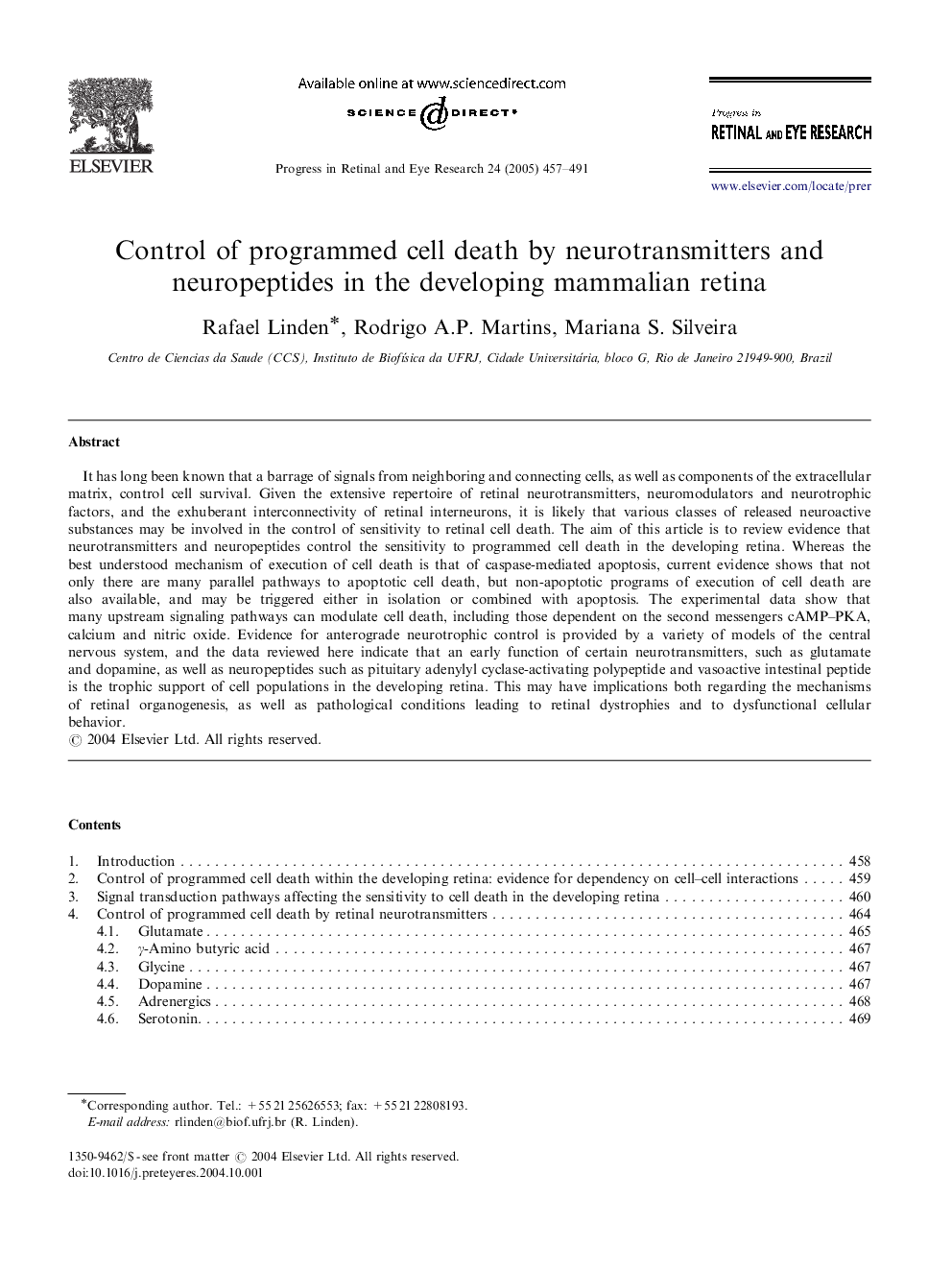| Article ID | Journal | Published Year | Pages | File Type |
|---|---|---|---|---|
| 9348310 | Progress in Retinal and Eye Research | 2005 | 35 Pages |
Abstract
It has long been known that a barrage of signals from neighboring and connecting cells, as well as components of the extracellular matrix, control cell survival. Given the extensive repertoire of retinal neurotransmitters, neuromodulators and neurotrophic factors, and the exhuberant interconnectivity of retinal interneurons, it is likely that various classes of released neuroactive substances may be involved in the control of sensitivity to retinal cell death. The aim of this article is to review evidence that neurotransmitters and neuropeptides control the sensitivity to programmed cell death in the developing retina. Whereas the best understood mechanism of execution of cell death is that of caspase-mediated apoptosis, current evidence shows that not only there are many parallel pathways to apoptotic cell death, but non-apoptotic programs of execution of cell death are also available, and may be triggered either in isolation or combined with apoptosis. The experimental data show that many upstream signaling pathways can modulate cell death, including those dependent on the second messengers cAMP-PKA, calcium and nitric oxide. Evidence for anterograde neurotrophic control is provided by a variety of models of the central nervous system, and the data reviewed here indicate that an early function of certain neurotransmitters, such as glutamate and dopamine, as well as neuropeptides such as pituitary adenylyl cyclase-activating polypeptide and vasoactive intestinal peptide is the trophic support of cell populations in the developing retina. This may have implications both regarding the mechanisms of retinal organogenesis, as well as pathological conditions leading to retinal dystrophies and to dysfunctional cellular behavior.
Related Topics
Life Sciences
Neuroscience
Sensory Systems
Authors
Rafael Linden, Rodrigo A.P. Martins, Mariana S. Silveira,
